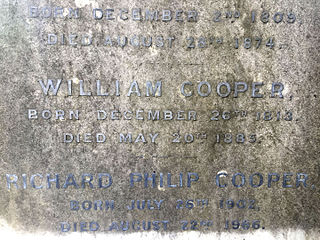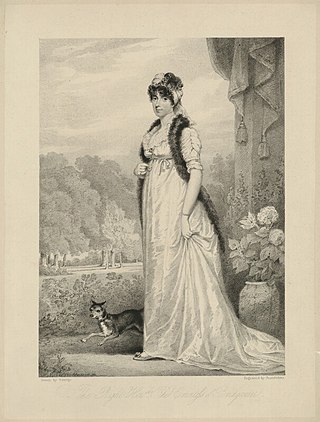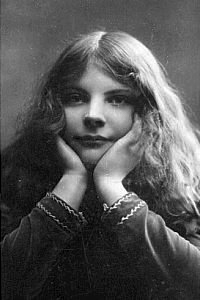
Berkhamsted is a historic market town in Hertfordshire, England, in the Bulbourne valley, 26 miles (42 km) north-west of London. The town is a civil parish with a town council within the borough of Dacorum which is based in the neighbouring large new town of Hemel Hempstead. Berkhamsted, along with the adjoining village of Northchurch, is encircled by countryside, much of it in the Chiltern Hills which is an Area of Outstanding Natural Beauty (AONB).

Sir James Matthew Barrie, 1st Baronet, was a Scottish novelist and playwright, best remembered as the creator of Peter Pan. He was born and educated in Scotland and then moved to London, where he wrote several successful novels and plays. There he met the Llewelyn Davies boys, who inspired him to write about a baby boy who has magical adventures in Kensington Gardens, then to write Peter Pan, or The Boy Who Wouldn't Grow Up, a 1904 West End "fairy play" about an ageless boy and an ordinary girl named Wendy who have adventures in the fantasy setting of Neverland.

Hemel Hempstead is a town in the Dacorum district in Hertfordshire, England. It is 24 miles (39 km) northwest of London, and is part of the Greater London Urban Area. The population at the 2011 census was 97,500.

Finding Neverland is a 2004 biographical fantasy film directed by Marc Forster and written by David Magee, based on the 1998 play The Man Who Was Peter Pan by Allan Knee. The film is about playwright J. M. Barrie and his relationship with a family who inspired him to create Peter Pan. The film earned seven nominations at the 77th Academy Awards, including Best Picture, Best Adapted Screenplay, and Best Actor for Johnny Depp, and won for Best Original Score. The film was the inspiration for the stage musical of the same name in 2012.

Michael Llewelyn Davies was – along with his four brothers – the inspiration for J. M. Barrie's characters Peter Pan, the Darling brothers, and the Lost Boys. Late in life, his only surviving brother Nico described him as "the cleverest of us, the most original, the potential genius." He died in ambiguous circumstances, drowning with a close friend – and possible lover – just short of his 21st birthday. He was a first cousin of English writer Daphne du Maurier.

Peter Llewelyn Davies was the middle of five sons of Arthur and Sylvia Llewelyn Davies, one of the Llewelyn Davies boys befriended and later informally adopted by J. M. Barrie. Barrie publicly identified him as the source of the name for the title character in his 1904 play Peter Pan, or The Boy Who Wouldn't Grow Up.

George Llewelyn Davies was the eldest son of Arthur and Sylvia Llewelyn Davies. Along with his four younger brothers, George was the inspiration for playwright J. M. Barrie's characters of Peter Pan and the Lost Boys. The character of Mr. George Darling was named after him. He was killed in action in the First World War. He was the first cousin of the English writer Daphne du Maurier.

The Bridgewater Monument is a Grade II* listed monumental column in the Ashridge estate in Hertfordshire, England. It was built in 1832 to commemorate Francis Egerton, 3rd Duke of Bridgewater (1736–1803), known as the "Canal Duke".

The Rex is a cinema in the town of Berkhamsted, Hertfordshire, England. Designed in the art deco style by David Evelyn Nye in 1936, the cinema opened to the public in 1938. After 50 years of service, the cinema closed in 1988 and became derelict. The building was listed Grade II by English Heritage, and following a campaign to save the Rex by a local entrepreneur, the cinema re-opened to the public in 2004.
The Davies boys were the inspiration for the stories of Peter Pan by J. M. Barrie, in which several of the characters were named after them. They were the sons of Sylvia (1866–1910) and Arthur Llewelyn Davies (1863–1907). Their mother was a daughter of French-born cartoonist and writer George du Maurier and sister of actor Gerald du Maurier, whose daughter was author Daphne du Maurier. Their father was a son of preacher John Llewelyn Davies, and brother of suffragist Margaret Llewelyn Davies.

Arthur Llewelyn Davies was an English barrister of Welsh origin, but is best known as the father of the boys who were the inspiration for the stories of Peter Pan by J. M. Barrie.
The Little White Bird is a novel by the Scottish writer J. M. Barrie, ranging in tone from fantasy and whimsy to social comedy with dark, aggressive undertones. It was published in November 1902, by Hodder & Stoughton in the UK and Scribner's in the US. The book attained prominence and longevity thanks to several chapters written in a softer tone than the rest of the book, which introduced the character and mythology of Peter Pan. In 1906, those chapters were published separately as a children's book, Peter Pan in Kensington Gardens.

The Parish Church of St Peter, Great Berkhamsted, is a Church of England, Grade II* listed church in the town of Berkhamsted, Hertfordshire, in the United Kingdom. It stands on the main High Street of the town and is recognisable by its 85-foot (26 m) clock tower.

Berkhamsted Place was an English country house which was erected sometime around 1580 in Berkhamsted, Hertfordshire, England. It was built by Sir Edward Carey, the keeper of the Jewels to Queen Elizabeth I from stones removed from Berkhamsted Castle. Several notable residents of Berkhamsted lived in the house and over the years its owners welcomed guests such as King Charles I and William Gladstone.

Dean Incent's House is a 15th-century timber-framed house in Berkhamsted, Hertfordshire, England. It is reputed to be the birthplace of John Incent, a dean in the Church of England who held office at St Paul's Cathedral from 1540 to 1545.

Ashlyns Hall is a country house at the edge of Berkhamsted in Hertfordshire, England. It is a Grade II* listed building.

William Cooper was a British veterinary surgeon, agriculturalist and industrialist who specialised in the manufacture of agricultural insecticides for livestock. He is credited with developing the first successful sheep dip, Cooper's Dip, in 1852.

Berkhamsted Town Hall is a municipal building in the High Street, Berkhamsted, Hertfordshire, England. It is a Grade II listed building.

Charlotte Catherine Anne, Countess of Bridgewater, née Charlotte Haynes, was a British noblewoman. She was known for her philanthropic and charitable acts, and supported numerous educational and religious causes. She was responsible for the laying out of the ornamental gardens around her family home at Ashridge in Hertfordshire.

Ela Queenie May was a child actress of the Edwardian era. She is probably best remembered as Liza, the Darling family servant, in the original production of Peter Pan and later played Wendy Darling in the touring companies of Peter Pan (1906–08). Before that, she played roles at several West End theatres from 1900, including the title role in Ib and Little Christina in 1901 and again in 1904.






















